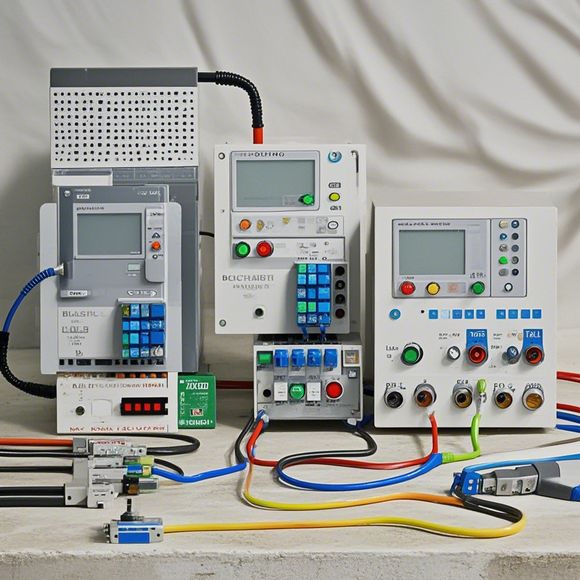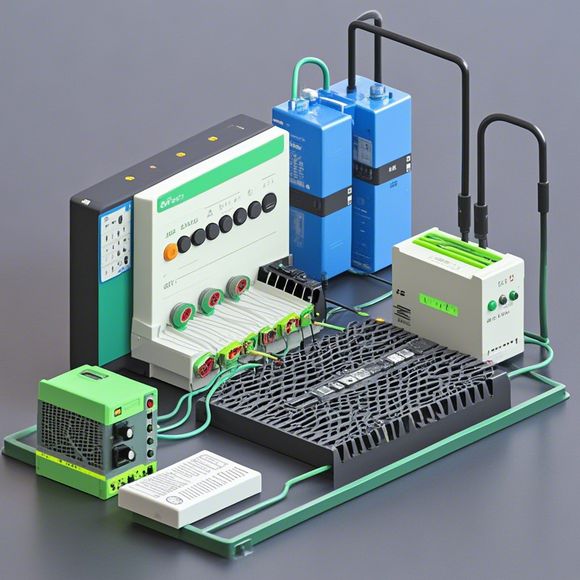PlC Controller: The Backbone of Modern Industrial Control Systems
In modern-day industrial control systems, the PLC (Programmable Logic Controller) controller holds a crucial position as its foundational element. These advanced systems are designed to handle complex tasks, from controlling machinery to managing production processes and ensuring safety. The ability to program these controllers allows for precise adjustments that can optimize performance and minimize errors. Furthermore, they offer a range of features such as real-time monitoring, data logging, and remote diagnostics, enabling operators to stay informed and make quick decisions. With continuous advancements in technology, PLC controllers have become more intelligent and capable of handling even the most challenging tasks. Their widespread use in manufacturing, healthcare, transportation, and other industries is testament to their unparalleled value and importance in today's world.
Hello, my friends! Today we're going to dive into the fascinating world of Programmable Logic Controllers (PLCs). These marvels of technology have been at the heart of industrial control systems for decades and continue to shape the way we manufacture and operate our machines and processes. So let's start by getting acquainted with what PLCs truly are, how they work, and why they are so important in today's modern world.
Firstly, let’s talk about what a PLC is, shall we? A Programmable Logic Controller, or simply PLC, is a powerful piece of hardware that sits in the middle of an industrial system. It's designed to take care of the complex tasks that need to be done within an industrial environment, like controlling valves, motors, switches, and lights. Essentially, it's like having a small computer on every machine, ready to respond to commands and make decisions based on those commands.
But how does this little guy work? Well, PLCs are essentially microcomputers that can be programmed to perform specific functions. They come with a plethora of input devices, like sensors, which can detect changes in the environment, and output devices, like actuators, which can perform physical actions based on the commands from the PLC. This makes it very flexible and adaptable to different industries and applications.
Now, let's say you've just installed a new PLC in your factory, and you're trying to get it up and running. First thing's first - you need to connect it to the network. You might have wired Ethernet connections or wireless Wi-Fi, but either way, you'll need to establish a connection between the PLC and the rest of the network. Once that's done, you can start programming the PLC with the software that came with it.

The software for PLCs is usually quite intuitive and easy to use. You'll need to create a series of programs that tell the PLC what to do when specific events occur. For example, if you want the PLC to turn on a light when someone walks into a room, you'll need to program it to detect motion sensors and respond accordingly. This kind of programming can be done manually or automatically using a variety of languages and tools.
Once the PLC is programmed, you can start testing it out. But before you do that, there's one final step that needs to be taken - you need to set up a safety protocol. This involves making sure that all of the electrical wiring is properly isolated from the rest of the factory equipment, and that any emergency stop buttons are easily accessible and functioning properly.
Once everything is set up, you'll want to test the PLC thoroughly to make sure it's working as expected. This might involve putting in some simple routines and seeing if everything works as planned, or maybe even trying to simulate a real-world scenario to see how it handles different types of inputs and outputs.

And finally, once everything is working perfectly, you can start enjoying the benefits of having a reliable and efficient PLC in place. Not only does it save time and money by taking care of many of the mundane tasks that would otherwise need to be done by humans, but it also provides peace of mind knowing that everything is under control and operating safely.
So there you have it, my friends. A brief overview of what PLC controllers are and how they work, along with some tips on getting started with them. If you're interested in learning more about this exciting technology, I highly recommend checking out some of the resources available online. There's no shortage of information out there, and I'm sure you'll find plenty of helpful tips and advice that will help you get the most out of your PLC setup.
Content expansion reading:

Articles related to the knowledge points of this article:
Mastering the Art of Plc Controllers: A Comprehensive Guide to Understand and Implement
PLC Controller for Manufacturing Automation
The cost of a PLC Controller: A Comprehensive Analysis
Plumbers Rule! The Role of PLC Controllers in the World of Waterworks
The Role of Programmable Logic Controllers (PLCs) in Foreign Trade Operations